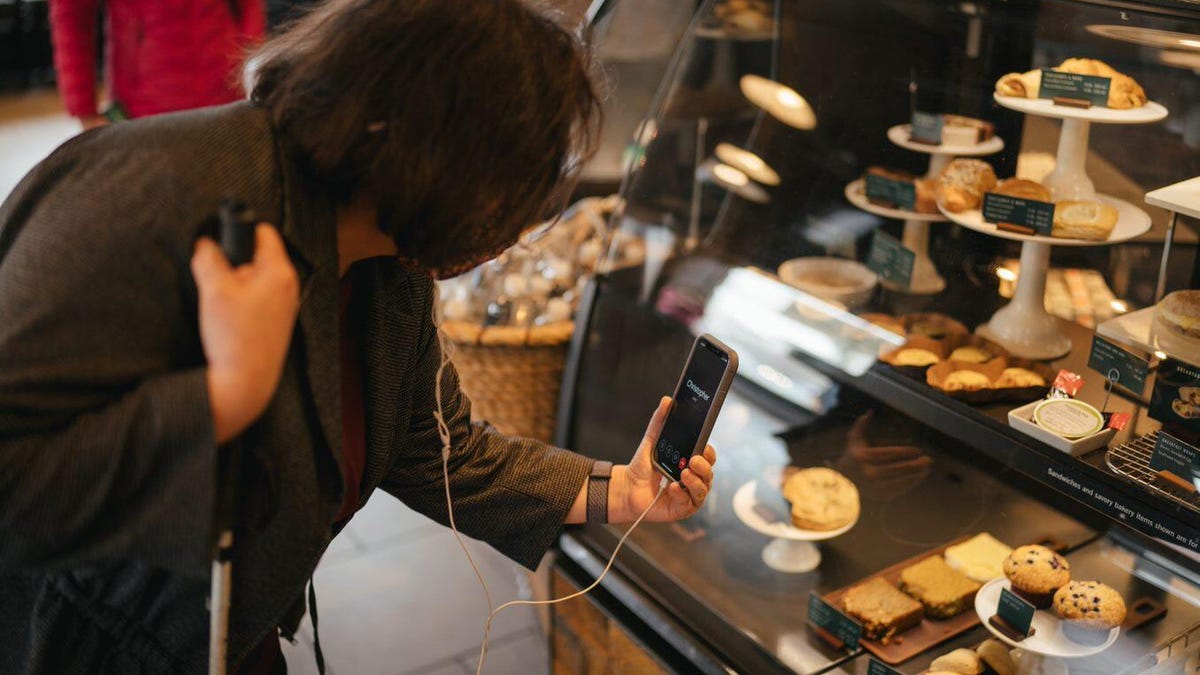Starbucks now offers access to app for blind, low-vision customers
The Aira app pairs customers with remote agents who can share product descriptions and other visual information.

Customers can use Aira to get visual descriptions of items in a Starbucks store.
Starbucks on Monday rolled out a handful of announcements related to its accessibility efforts, including news that it'll now offer free access to Aira, a service that connects blind and low-vision people to remotely located agents who share visual information through an app. The service is available in all company-operated and licensed Starbucks stores in the US.
When a customer enters a Starbucks location, they can open up the Aira app, which is free to download for iOS and Android. They'll then be connected with someone who can see their surroundings through their phone's camera and provide needed descriptions, such as what's in a pastry case or what a sign says.
The service can also help people navigate COVID-19 protocols like social distancing by letting users know how far away someone is from them, whether there are makers on the floor for where to stand and if there's plexiglass at the registers, for instance.
"It's even more relevant during times of COVID," Katie Young, Starbucks' senior vice president of global growth and development, said of the Aira service. "You can certainly see it being relevant all the time, but [especially in] times of COVID when you have that extra layer of anxiety of wanting to stay a certain distance."
Starbucks will also be rolling out new large-print and Braille menus in all US and Canada stores this summer, which were developed through a partnership with National Braille Press. Additionally, the company updated the Starbucks.com/menu webpage and Starbucks app to improve accessibility by adding features like image descriptions and information on whether a Starbucks location is a drive-thru or a cafe, which can help someone with a disability plan their visit.
Starbucks' efforts to boost accessibility come as other major companies look to do the same, especially in tech. They also come at a time when the coronavirus pandemic has highlighted just how critical digital accessibility is for a population that's often overlooked. Giants like Google, Microsoft, Facebook and Apple have launched more features designed to help a range of customers use their products and services. Android's Sound Notifications, for instance, alerts people with hearing loss about critical sounds around them while Apple's People Detection feature lets blind and low-vision iPhone and iPad users know how close someone is to them.

